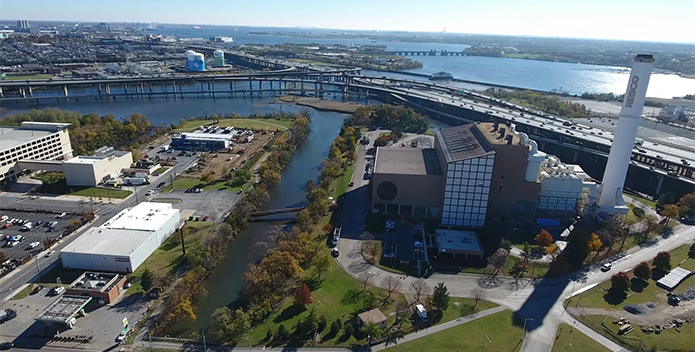It's no coincidence that what's good for water quality is often good for public health. And in Baltimore, one facility stands in the way of both.
A report commissioned by CBF concludes that living near Baltimore's Wheelabrator trash incinerator is similar to living with a smoker, at least for some children, senior citizens, and others with sensitive lungs. But the harm caused by the plant stretches into other states as well, causing $55 million annually in health problems.
The report, authored by George D. Thurston of New York University School of Medicine, focused on Wheelabrator as Maryland considers new nitrogen oxide (NOx) limits for the plant. The incinerator is one of many sources of NOx pollution in the region that may have similar effects on human health and the environment.
As we have previously discussed, reducing air pollution is critical not only in efforts to save the Bay, but also to improve public health. Alison Prost, CBF's Maryland Executive Director, sums it up—"Healthy communities are a healthy Bay."
We will continue to fight for clean water, knowing that with the full implementation of the Chesapeake Clean Water Blueprint, our economy will prosper, lifestyles will improve, and perhaps most importantly, lives will be saved.
This Week in the Watershed: Pipeline Pollution, Burning Trash, and High Quality H2O
- A report from the Chesapeake Bay Program reveals that Bay water quality is improving, but there is still room for improvement. (Bay Journal) BONUS: CBF Statement
- CBF is honoring Washington College as its Conservationist of the Year for its innovative environmental instruction. (Kent County News—MD)
- The panel of Virginia regulators charged with managing the Atlantic Coast Pipeline voted to withhold approval of the project until threats from pollution are more thoroughly examined. (News & Observer—VA) BONUS: CBF Statement
- A Baltimore power plant is emitting emissions that are harmful to both public health and the Bay. (CBS Baltimore—MD) BONUS: CBF Press Release
- Philanthropist Macon Brock, Jr. passed away Saturday, December 9. Brock is the namesake of CBF's Brock Environmental Center in Virginia Beach, VA. (WVEC—VA) BONUS: CBF Statement
What's Happening Around the Watershed?
January 4
- Easton, MD: Come hear state legislators and numerous regional organizations discuss their preservation, land and water goals for the 2018 Maryland General Assembly's Regular Legislative Session. Click here to register!
January 25-February 3
- Throughout Virginia: Help restore the health of the Chesapeake Bay and Virginia's rivers by participating in CBF's Grasses for the Masses program. Participants grow wild celery, a type of underwater grass, in their homes for 10-12 weeks. After 10-12 weeks of grow-out, participants will gather to plant their grasses in select local rivers to bolster grass populations and help restore the Bay. With workshops held throughout Virginia, there's plenty of opportunity to get involved. Click here to find one near you!




